Langtang Valley Trek – Explore the Beautiful Himalayan Paradise
Langtang Valley Trek is one of the most popular and scenic treks in Nepal. This trek takes you through beautiful forests, traditional Tamang villages, and stunning mountain landscapes. The trail is perfect for beginners and experienced trekkers alike. Nature Heaven Treks and Expedition offers this trek with full support, including professional guides, experienced porters, comfortable accommodations, and safety arrangements, making it an unforgettable adventure.
Easy Navigation and Convenient Planning
The trek usually starts from Sundarijal or Dhunche near Kathmandu and ends at Langtang Village or Kyanjin Gompa. The trail is well-marked, and our guides make navigation simple. You can choose different durations depending on your schedule, usually between 7 to 12 days. Nature Heaven Treks provides detailed itineraries, including hotel and tea-house bookings, transportation, and meals, so you can enjoy the trek without worrying about planning.
Scenic Beauty and Unique Experiences
Langtang Valley Trek offers amazing views of mountains like Langtang Lirung, Ganesh Himal, and Gosaikunda Lake. You will walk through rhododendron forests, rivers, and waterfalls. The villages give a glimpse into local Tamang culture, where you can experience traditional food, festivals, and warm hospitality. This trek is perfect for photographers, nature lovers, and adventure seekers who want to enjoy the serene Himalayan environment.
Safety, Guide Support, and Comfort
Safety is a top priority during the Langtang Valley Trek. Our professional guides and porters help you carry your luggage, monitor altitude sickness, and ensure a safe and comfortable journey. Nature Heaven Treks provides proper trekking gear guidance, emergency support, and high-quality accommodations. This makes the trek suitable even for first-time trekkers who want a safe, smooth, and enjoyable adventure.
Book Your Langtang Valley Trek with Nature Heaven Treks
Booking your Langtang Valley Trek with Nature Heaven Treks and Expedition is easy. You can contact us online or by phone to customize your trek, including duration, budget, and special requests. Our packages include guided trekking, accommodation, meals, permits, and transportation. Embark on this Himalayan adventure with us and create memories that will last a lifetime.
Langtang Valley Trek Difficulty – Easy to Moderate Trek in Nepal
The Langtang Valley Trek is considered an easy to moderate trekking route in Nepal, making it perfect for beginners and experienced trekkers alike. The trail is well-marked and passes through beautiful forests, rivers, and traditional Nepali villages, offering a safe trekking experience. Trekkers do not need any technical climbing skills, but being in good physical condition will make the journey more enjoyable. You will walk 4–6 hours per day on average, with gradual elevation gain, so acclimatization is easier compared to higher Himalayan treks.
Altitude and Physical Effort
The highest point of the trek is Kyanjin Gompa, which sits at about 3,870 meters (12,694 feet). While the altitude is moderate, trekkers may feel mild altitude effects, so taking it slow and drinking plenty of water is important. The trail has some uphill climbs, stone steps, and small river crossings, but there are tea houses and lodges along the way where you can rest. This trek is ideal for those who want to experience the Himalayas without the extreme difficulty of the Everest Base Camp Trek or Annapurna Circuit Trek.
Why Choose Nature Heaven Treks for Langtang Valley Trek
With Nature Heaven Treks and Expedition, your Langtang adventure is safe and well-organized. We provide experienced guides, porters, and all necessary trekking arrangements, ensuring your trip is comfortable. Our packages include lodging, meals, and transportation, making it easy for anyone to enjoy the trek without worry. Whether you are a first-time trekker or a seasoned hiker, the Langtang Valley Trek offers breathtaking Himalayan views, cultural experiences, and a manageable trekking challenge in Nepal.
Langtang Valley Trek – Explore Nepal’s Hidden Himalayan Beauty
The Langtang Valley Trek is one of the most popular trekking options in Nepal for travelers who want a perfect mix of nature, culture, and adventure. This trek takes you through lush forests, rhododendron-filled hills, traditional Tamang villages, and breathtaking views of snow-capped mountains. With Nature Heaven Treks and Expedition, you can enjoy a fully guided trek with expert support, comfortable teahouses, and all necessary trekking arrangements. This trek is ideal for both beginners and experienced trekkers who want to experience the serene beauty of Nepal’s Langtang region.
Easy Planning and Comfortable Trekking Experience
Booking your Langtang Valley Trek with Nature Heaven Treks makes the process simple and stress-free. We provide all permits, meals, local guide support, and accommodation arrangements so you can focus entirely on your adventure. Whether you are looking for a short 7–10 day trek or a longer 12–14 day journey, we can customize the itinerary to suit your schedule and fitness level. You can also combine this trek with other activities in Nepal, like Kathmandu sightseeing tours or Chitwan National Park Safari, for a complete travel experience.
Why Choose Langtang Valley Trek with Nature Heaven Treks
Choosing the Langtang Valley Trek through Nature Heaven Treks ensures safety, comfort, and authentic experiences. Our expert guides are locals who know the area well and can share cultural insights, history, and hidden spots along the trail. This trek offers a perfect balance of adventure and relaxation, with opportunities for photography, wildlife spotting, and visiting local monasteries. By booking directly with us, you get a personalized service that guarantees a memorable Himalayan trekking adventure while supporting sustainable tourism in Nepal.

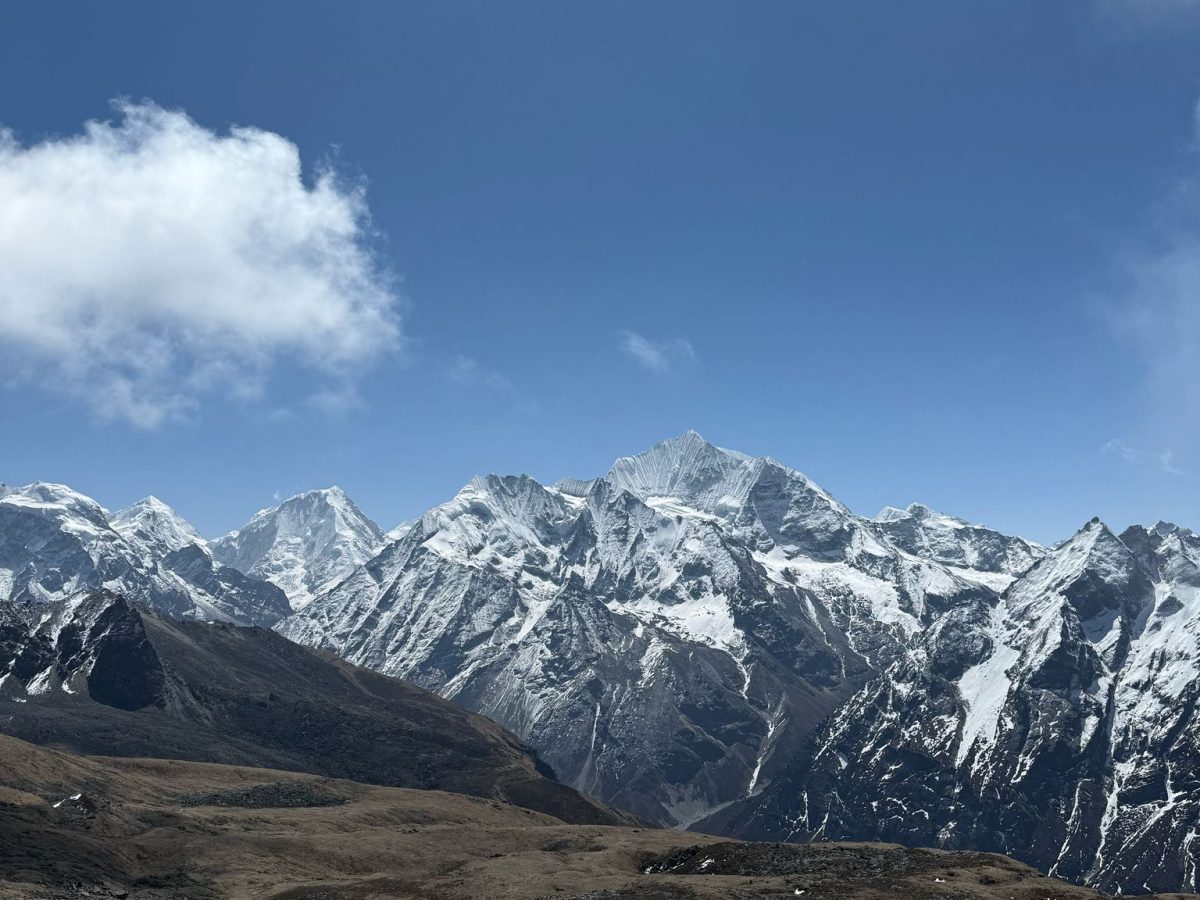

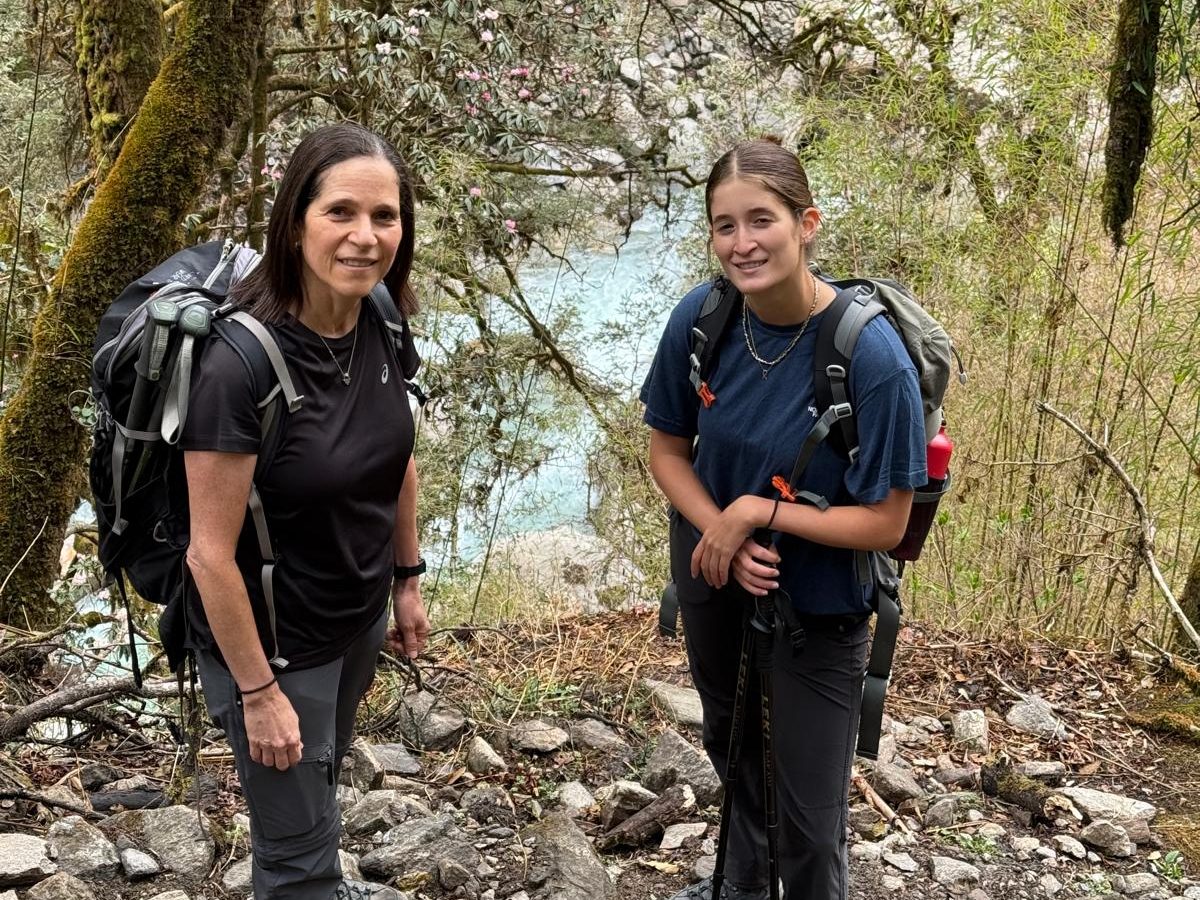
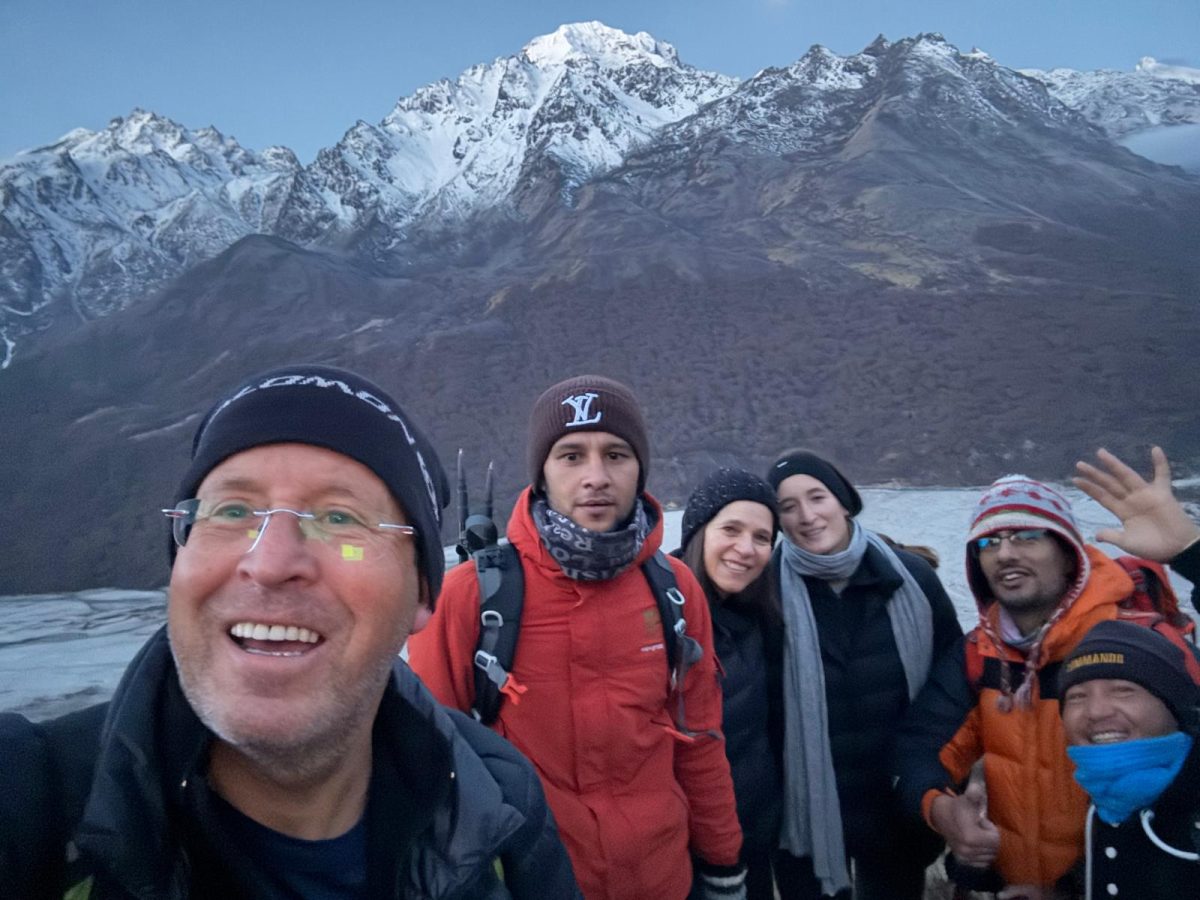

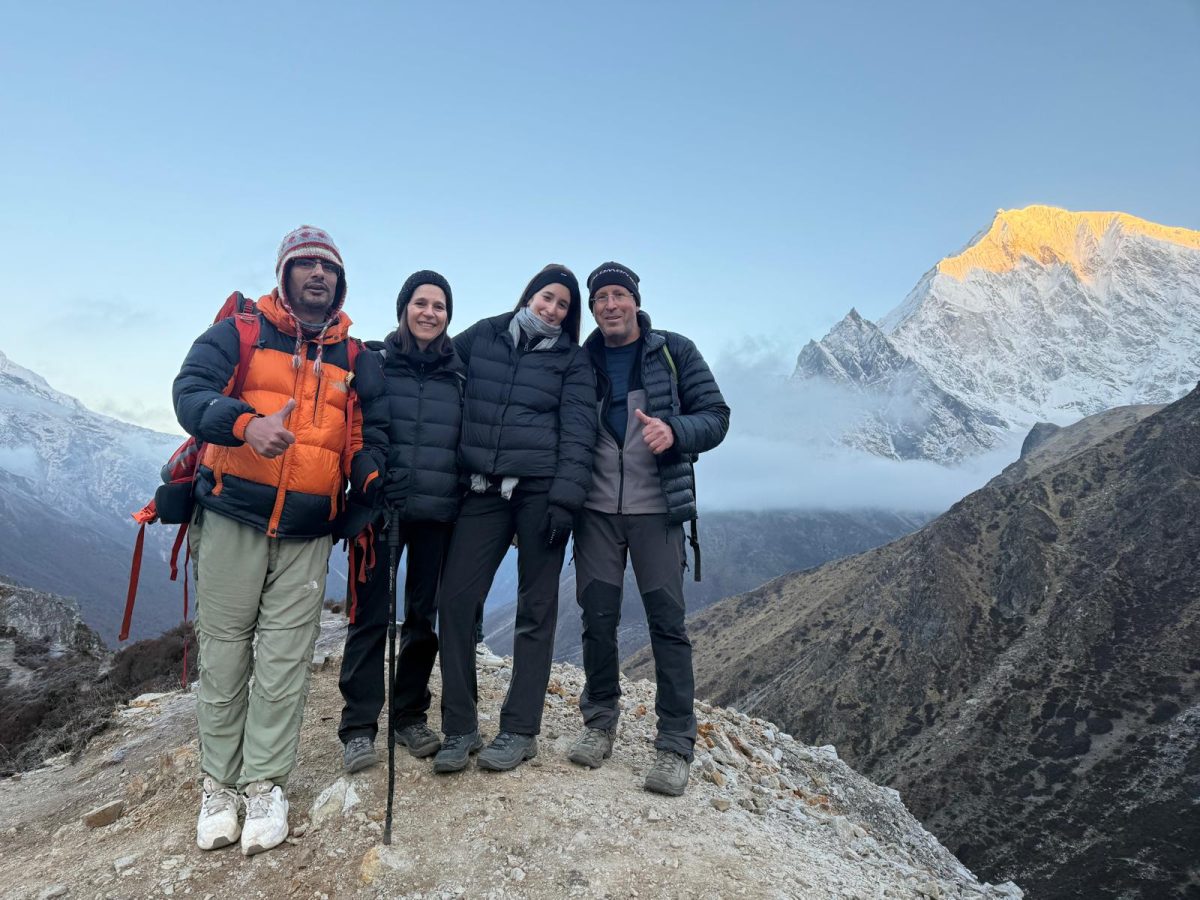
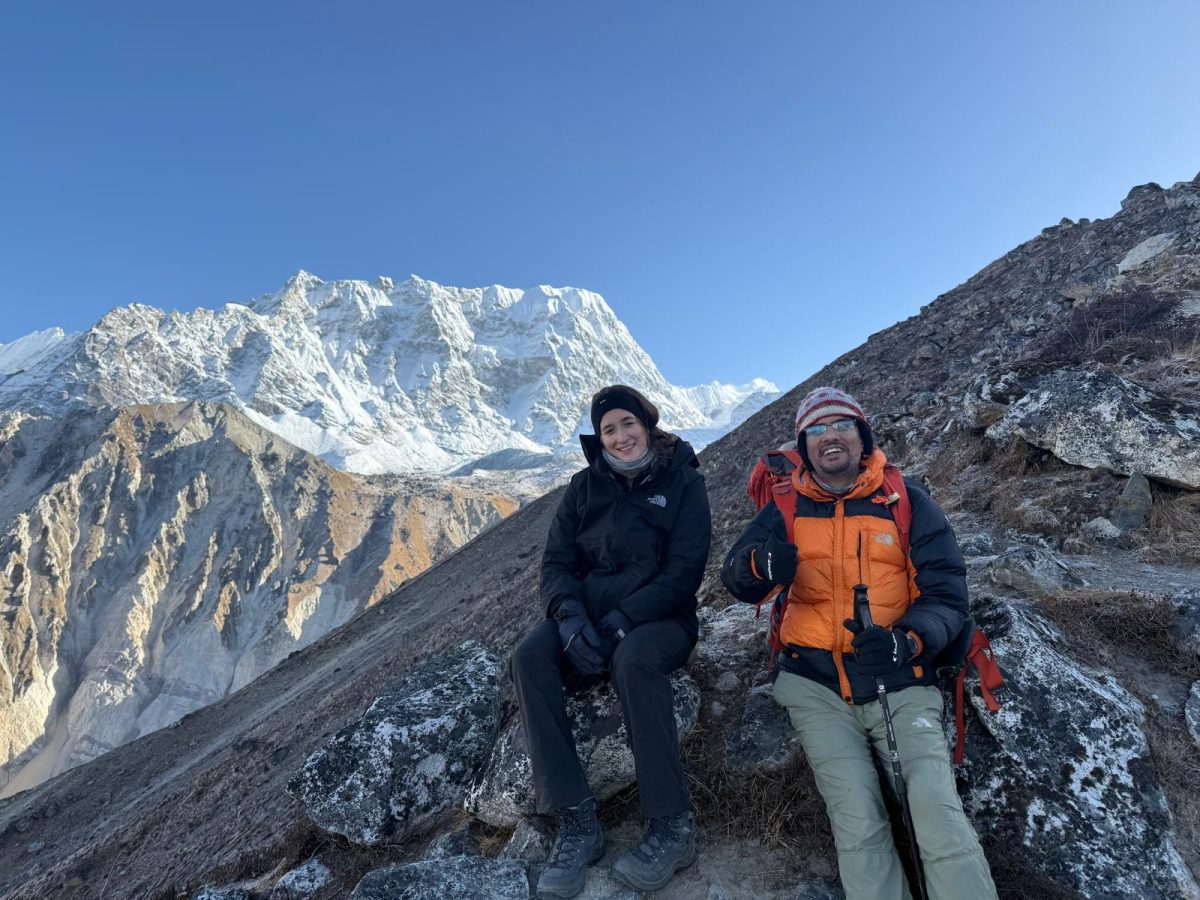
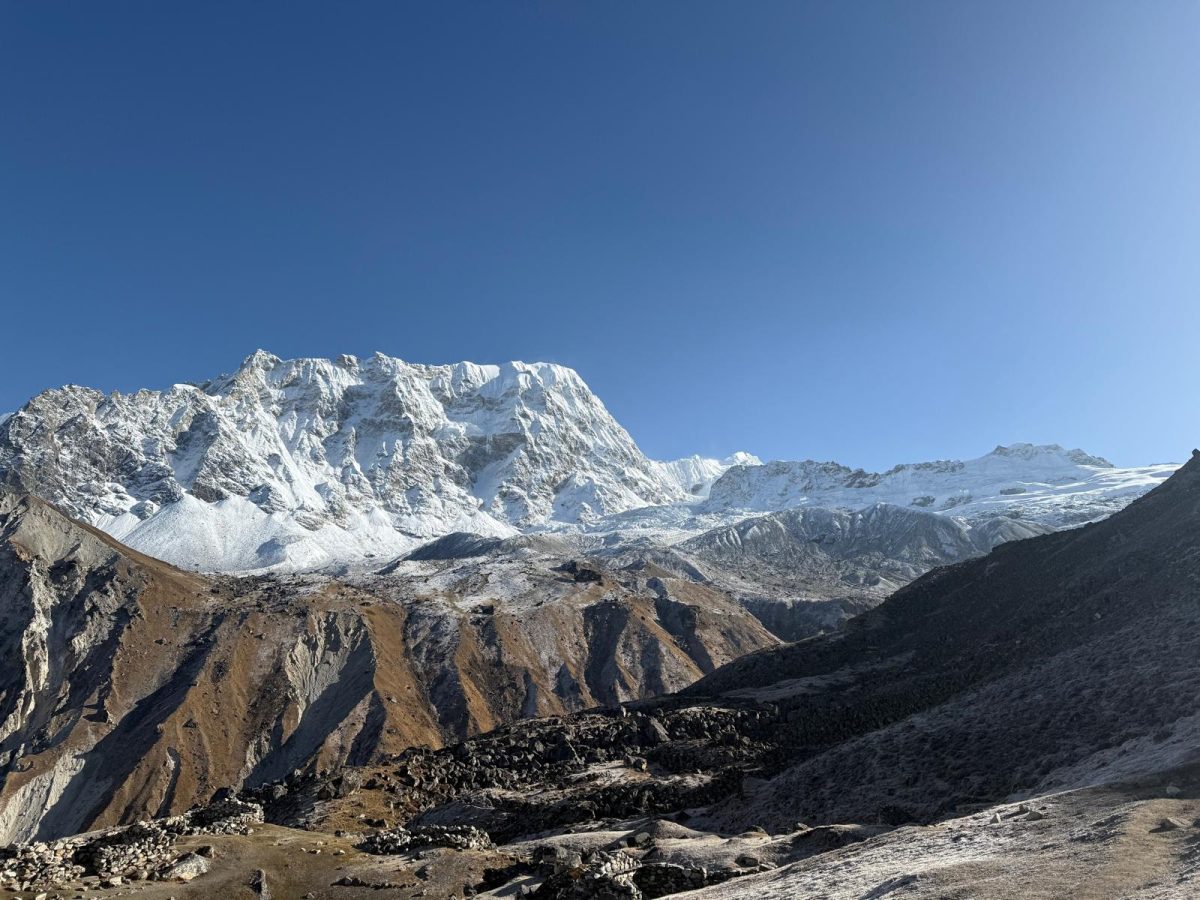
Welcome to Nepal!
Upon your arrival at the airport, our friendly team will be there to greet you with a warm smile. Look out for a staff member holding a nameplate with your name at the terminal gate for easy identification. From there, you’ll be comfortably escorted to your hotel.
This marks the beginning of your unforgettable Nepal journey. Once you’ve settled in, feel free to unpack, relax, or explore the vibrant surroundings of your hotel at your own pace.
In the evening, join us for a delightful welcome dinner at a traditional local restaurant. It’s the perfect opportunity to meet your fellow travelers and our team, share stories, and get a taste of Nepalese hospitality.
After dinner, you’re invited to experience the lively energy of Thamel — Kathmandu’s buzzing hub of shops, cafes, and nightlife. Soak in the atmosphere before returning to your hotel for a restful night’s sleep, ready to begin your adventure.
Today’s itinerary is jam-choked with cultural immersion as you explore many of Kathmandu’s most important and historic sites with one of our friendly tour guides. Your journey begins at the long-lasting Swayambhunath Temple, affectionately called the Monkey Temple, which offers panoramic views of the town from its hilltop location. Next, you’ll visit Pashupatinath Temple, a serious pilgrimage destination for Hindus, followed by a stop at Boudhanath Stupa, the most important stupa in Nepal, showcasing exquisite Tibetan Buddhist architecture.
The tour concludes at Kathmandu Durbar Square, an “open museum” of palaces, courtyards, and temples, vibrant with the bustling local market and various eateries. After exploring these rich cultural sites, you will have time to rest before we meet again in our office for a trek briefing. tonight, we are going to finalize your preparations for the Langtang Valley trek, including packing and last-minute shopping, while our team handles all necessary trek permits. This ensures a smooth start to your upcoming adventure.
Your journey on the Northern Highway from Kathmandu transitions beautifully through Middle Hill forest and farmland, crossing the Tadi Khola at Devighat before navigating the Trisuli Valley. Ascending through rhododendron forests, the route reaches Thulo Bharku, a quaint Tamang village at 2,140 meters. Here, you’ll enjoy lunch in a grove, savoring views of the majestic Ganesh Himal and therefore the ranges along the Tibetan border. The trail then gently descends to Thulo Syabru, a Tamang heritage village, where you’ll spend the night. This trek offers a mix of natural beauty and cultural insight, making it a memorable experience.
Today’s trek begins by winding down from the village ridge to U Kang and descends towards the Langtang Khola, which originates from the Langtang Glacier on Langtang Ri. This glacier is notably near the Tibetan border. At a T-junction, you’ll turn east onto a trail that runs high above the south bank of the river, passing through diverse forests of oak, rhododendron, and bamboo.
These forests are home to an array of wildlife, including numerous bird species, grey langurs, red pandas, wild boars, and Himalayan black bears. The trek continues to Bamboo, located at 1,930 meters, where the trail crosses to the northern side of the stream and moves into the drier scrub forest. Along this segment, you’ll pass several beautiful waterfalls before climbing to the split village of Renche at 2,400 meters.
From Renche, the trail rises gently to Changtang then on to the Lama Hotel, where you’ll spend the night. This leg of the journey offers not only a chic natural setting but also a superb opportunity to watch wildlife in their natural habitat.
Today’s trek starts with a mild climb through a stunning mixed forest of rhododendron, oak, hemlock, and maple, gradually becoming steeper. As you ascend, you’ll catch intriguing glimpses of the towering Langtang Himal to the north. The trail then descends to a quaint teahouse by the river, providing a peaceful spot for an occasion before climbing to Ghora Tabela, a settlement that features a hotel and a military post, located at 2,970 meters.
The journey continues into the broad, U-shaped valley shaped by the Langtang, Shalbachum, and Lirung Glaciers. As you climb the hillside, you’ll traverse scrub forests and terraced fields where local staples like barley, buckwheat, and potatoes are cultivated. the trail then leads you through the villages of Thangshyap, Chamki, and Ghumba, the latter featuring a motivating gompa (monastery).
Along the way, you will see water-driven prayer wheels and mills, elements typical of the region’s spiritual existence. The trek concludes for the day in the village of Langtang, located at 3,430 meters, in its stunning valley. This village was the previous headquarters of Langtang Park and offers a major place to rest and reflect on the journey. Overnight in Langtang allows for a deeper appreciation of the local culture and natural surroundings.
After departing Langtang village, your trek quickly results in Mundu, a little settlement reached within half an hour. Mundu showcases traditional houses and offers several teahouses catering to trekkers, providing a glimpse into the local lifestyle. Continuing from Mundu, the route ascends through picturesque yak pastures and crosses several bridges thanks to Kyanjin Gompa. Given the short distance from Langtang to Kyanjin Gompa, you will have ample time to explore the realm later in the day.
Kyanjin Gompa is thought for its local cheese factory and an ancient monastery. Visiting the cheese factory, you’ll need the chance to look at the cheese-making process and sample a number of the delicious products. Additionally, if you’re up for more adventure, an optional hike to Kyanjin Ri could be a fantastic choice. This vantage offers a shocking opportunity to witness an exquisite sunset together with breathtaking views of mountains like Dorje Lakpa, Langshisha, and Gang Chenpo. This part of the trek not only immerses you in the natural great things about the region but also offers a taste of local culture and culinary traditions.
Today is an important acclimatization day to assist minimize the danger of Acute altitude sickness (AMS). the recommendation from experts is to “climb high and sleep low,” which implies engaging in light activity even during rest days to regulate the altitude effectively.
A recommended activity may be a morning hike to Tsergo Ri, which stands at an elevation of 5,000 meters. From the summit, you will be rewarded with stunning panoramic views of the glacier tumbling from Langtang Lirung, the very best peak within the area at 7,227 meters, and other significant peaks like Kinshung, Yansa Tsenji, Dorje Lakpa, Ganchenpo, Dshabu Ri, and Urking Kanggari. Additionally, you’ll be able to glimpse Shisha Pangma, located just beyond the border in China, notable as China’s only 8,000-meter peak.
After descending back to the teahouse for lunch, the afternoon is ideal for exploring the Kyanjin Valley and its glaciers more easily. This acclimatization day isn’t only beneficial for your health but also allows you to deeply appreciate the majestic surroundings. Overnight are at the teahouse, ensuring a restful end to a lively day.
Today marks the start of your descent, retracing your steps back to the Lama Hotel from Kyanjin Gompa after a hearty breakfast. As you trek downhill, you’ll taste Langtang village and Ghoda Tabela, navigating lush rhododendron forests and crossing occasional suspension bridges. This part of the journey offers beautiful scenery, as you witness the landscape from a brand-new perspective during the descent. The trek back to Lama Hotel allows you to all over again enjoy the serene natural environment and potentially spot wildlife you’ll have missed on the high.
Today, your trek continues as you head back to Syabrubesi, retracing the identical trail you ascended earlier. This leg of the journey involves a gradual descent through dense forests and past small settlements, enriching your trek with scenic vistas of mountains like Ganesh Himal and Langtang Lirung. the trail winds through lush rhododendron and oak forests, and crosses several small streams, offering ample opportunities to understand the area’s rich biodiversity. This section is especially vibrant, showcasing the varied flora and fauna of the region as you create your way back to the start line of your trekking adventure.
After enjoying a hearty breakfast, you’ll begin the repulse to Kathmandu. This journey is going to be lengthy, together with your arrival within the capital scheduled for late afternoon. Upon reaching Kathmandu, your guide will assist together with your transfer to the hotel, where you’ll be able to unpack and take a while to rest after the long drive.
With just tonight to explore, consider venturing resolutely to experience the colorful shopping and nightlife of Thamel. This bustling neighborhood offers a plethora of outlets, cafes, and entertainment options, providing a stark contrast to the tranquility of the mountains.
To get through your adventure, a farewell dinner is planned for the late evening. This gathering is going to be a superb opportunity to reflect on your trek and share experiences with your group. After dinner, the rest of the night is yours to relax or continue enjoying what Kathmandu needs to offer.
As your Langtang Valley trek concludes, you’re invited to share any feedback with Nature Heaven Trek. Their team will ensure a smooth transfer from your hotel to the international airport, timed along with your flight schedule. If you’re considering extending your stay in Nepal, they provide a range of additional adventurous and relaxing trips throughout the country. Let the team know if you’re curious about exploring more, and that they can help plan further unforgettable experiences for you.
✔️ Private pickup from Tribhuwan International Airport and drop-off at your hotel upon arrival.
✔️ Jeep ride from Kathmandu to Syabrubesi .
✔️ Jeep ride from Syabrubesi to Kathmandu
✔️ 2 nights in Kathmandu on a bed and breakfast (BB) basis. 4-5 Star Hotel
✔️ 7 nights in mountain teahouses (twin-sharing.
✔️ 9 breakfasts, 8 lunches, and 8 dinners during the trek. Meals include traditional dal bhat, noodles, momos, pasta, and soups.
✔️ Purified drinking water (Ef-Chlor water purification tablets) provided throughout the trek.
✔️ Certified, English-speaking trekking guide with first-aid training.
✔️ Assistant guide for groups of 6+ members.
✔️ All staff wages, meals, and equipment covered.
✔️ Required trekking permits for the Manaslu region.
✔️ All applicable taxes, service charges, and VAT.
✔️ Porter for Luggage Carrying: (each porter can carry up to 25 kg; one porter for two trekkers is recommended).
✔️ All staff wages, meals, and equipment are covered.
✔️ Complimentary langtang trekking map.
✔️ Sleeping bag rated up to -20°C.
✔️ Duffel bag (70–80L) if using porter service.
✔️ First-aid medical kit carried by your guide.
✔️ Free luggage storage during the trek.
✔️ Completion certificate.
✔️ Nature Heaven Treks souvenir T-shirt.
✔️ Farewell dinner in Kathmandu after the trek.
❌ International flights, Nepal visa fees, and personal travel insurance are not included.
❌ Extra costs during the trek, such as hot showers, Wi-Fi, drinks, extra meals, and battery charging.
❌ Any additional nights or meals in Kathmandu beyond what’s included in the package.
❌ Tips for your guide and porter.
❌ Any services not specifically mentioned under “Included in the Cost.”
Enjoy complete flexibility with private departures available year-round. You can choose your preferred start date, and we’ll handle all the arrangements. Just use the booking form on the top right to select your date and leave the rest to us.
Once you book, your trip is 100% guaranteed – even if you’re the only one. We don’t cancel based on low enrollment. Every trekker receives the same high-quality service, whether solo or in a small group.
If your plans change, you have options. Cancel at least 30 days before departure for a full deposit refund. If canceling within 30 days, your deposit stays safe with us and can be used to reschedule your trek for any future date that suits you.
The best time for Langtang Valley Trek is during spring (March to May) and autumn (September to November). In these months, the weather is clear, the skies are bright, and the views of the Himalayan peaks like Langtang Lirung are stunning. Spring brings beautiful rhododendron flowers, while autumn offers perfect trekking conditions with less rain and calm weather. These seasons are ideal for trekking, sightseeing, and photography, making your journey safe and enjoyable.
Winter (December to February) and monsoon season (June to August) are less recommended for trekking. Winter can be very cold, especially at higher altitudes, while monsoon brings heavy rain, slippery trails, and possible landslides. However, if you enjoy fewer tourists and snowy landscapes, winter can also be an adventurous choice for Langtang Trek.
Nature Heaven Treks and Expedition, we help you plan your Langtang Valley Trek in the perfect season. We provide guided treks, hotel bookings, transportation, and trekking permits, ensuring a smooth and safe journey. Booking in the best season guarantees you an unforgettable trekking experience with spectacular Himalayan views and comfortable trekking conditions. Start planning your trek today with us for the best Langtang adventure!
During the Langtang Valley Trek, food is an important part of your journey, and Nature Heaven Treks and Expedition ensures you enjoy safe, tasty, and nutritious meals along the way. In the tea houses and lodges, you will find a variety of options, including Nepali dal bhat (rice and lentils), momo (dumplings), noodles, soups, and fresh vegetables, all prepared hygienically. Hot drinks like tea, coffee, and cocoa are available to keep you warm at high altitudes. Meals are reasonably priced, making it easy to budget your trek, and you can order extra portions if needed. Staying with trusted tea houses recommended by Nature Heaven Treks guarantees not just delicious food, but also clean dining areas, safe drinking water, and friendly service, making your Langtang adventure enjoyable and hassle-free.
During the Langtang Valley Trek, trekkers can enjoy comfortable and clean tea house and lodge accommodations at every stop along the route. These lodges are locally owned and provide simple rooms with beds, blankets, and shared bathrooms, giving you a cozy place to rest after a day of trekking. Most lodges also offer hot showers, Wi-Fi, and local meals, making it easy to stay connected and well-fed. Booking through Nature Heaven Treks and Expedition ensures you get trusted, safe, and well-managed accommodations, with support from our experienced team who can arrange rooms, meals, and any special requests in advance. This makes your trek smooth, relaxing, and worry-free while exploring the stunning Langtang Valley and its beautiful Himalayan views.
The Langtang Valley Trek is considered a moderate trek, making it perfect for beginners and experienced trekkers alike. The trail is well-marked, with steady paths through beautiful forests, traditional villages, and stunning Himalayan views, but some parts involve uphill climbs that require a good level of fitness. You don’t need technical climbing skills, and the trek is accessible year-round, though spring and autumn are the best seasons. At Nature Heaven Treks and Expedition, we provide experienced guides, porter support, and carefully planned itineraries to make your trek safe, comfortable, and enjoyable. Whether you want a short adventure or a full Langtang exploration, we handle all permits, accommodation, and local transport, making your journey stress-free and memorable. This trek is ideal for travelers seeking a mix of nature, culture, and Himalayan adventure in Nepal.
Travel insurance is very important for your Langtang Valley Trek to stay safe and enjoy the journey without worry. It covers emergencies like illness, accidents, flight delays, lost luggage, and helicopter rescue if needed. For trekking in Nepal, make sure your insurance includes high-altitude trekking, medical evacuation, and trip cancellation coverage. You can easily buy travel insurance online from reliable providers before your trek. Nature Heaven Treks and Expedition recommends checking your policy carefully to ensure it covers all your needs, so you can focus on the stunning mountains, local culture, and adventure in Langtang Valley safely and confidently.
Symptoms can start at elevations above 3,500m and include nausea, headaches, dizziness, and fatigue.
Tips to prevent altitude sickness:
Ascend gradually and allow time for acclimatization
Stay hydrated and avoid alcohol
Consider taking Acetazolamide (Diamox) after consulting a doctor
Descend immediately if symptoms worsen
Rest, use portable oxygen if needed, and never ignore warning signs
Essentials include:
50–70L backpack, sleeping bag, headlamp
Water bottle/purifier, warm clothes, rain gear
Hiking boots, gloves, sunglasses, sunscreen
Quick-dry layers, thermal wear, first aid kit, toiletries
Personal documents, passport, camera, maps, and guidebook
Safety and Guide Support for Langtang Valley Trek: Your safety is our top priority on the Langtang Valley Trek. At Nature Heaven Treks and Expedition, we provide experienced, licensed local guides who know the trails, weather, and emergency procedures. Our guides offer 24/7 support, help with navigation, acclimatization tips, and ensure a smooth trekking experience from Kathmandu to Langtang Valley. We also provide information on safe routes, local culture, and trekking essentials. With our professional team, you can focus on enjoying the breathtaking Himalayan scenery while staying safe. Book your trek with us today for trusted, guided Langtang Valley trekking.
Nature Heaven Treks is a certified and experienced trekking agency. To book your trek, a 10% deposit is required. You’ll need to provide a copy of your passport, insurance, passport-size photos, and flight details within a week of booking. Payments can be made via online transfer, Western Union, or in person using cash, card, or bank transfer upon arrival in Nepal.
Our team is here to guide you with personalized recommendations, insider advice, and the latest travel updates to make your journey smooth and memorable.
Embark on unforgettable adventures through majestic landscapes, rich cultural sites, and serene natural retreats. Our travel packages are designed to suit every explorer whether you seek thrill, peace, or heritage.
More than 730 individuals and over 50 countries travellers we have deal with
Yael0505
July 21, 2024
“We had an excellent trek with Krishna and his excellent team. The tour itself was excellently planned.”
Wildnature2006,
May 1, 2024
“From the moment we met Krishna at the airport, we knew we were in good hands. Immediately upon arrival…”
Dreamer47485971266,
November 23, 2023
“We had a wonderful time trekking Langtang and the frozen lakes. Krishna has done everything so every…”
Nature Heaven Treks is the perfect choice for the Langtang Valley Trek because we offer expert local guides, personalized itineraries, and top-quality services that ensure your safety, comfort, and enjoyment. With years of experience in the region, we handle all permits, logistics, and accommodations, so you can focus on experiencing the breathtaking Himalayan scenery, rich Tamang culture, and warm hospitality along the trail.
Yes, with Nature Heaven Treks, you can fully customize your Langtang Valley Trek itinerary to match your travel dates, fitness level, and personal interests. Whether you want to add extra acclimatization days, explore nearby villages, or combine the trek with other destinations in Nepal, our team will design a flexible plan that ensures you get the best experience while meeting your preferences and needs.
Nature Heaven Treks offers a variety of trekking options, including popular routes like the Everest Base Camp and Annapurna Circuit, as well as off-the-beaten-path adventures in regions like Manaslu and Langtang .
✅ 17+ Years of Trekking Experience
✅ Certified and Friendly Local Guides
✅ 100% Tailor-Made Itineraries
✅ Small Groups, Big Adventures
✅ Eco-Conscious and Culturally Respectful Practices
✅ 5-Star Reviews from Adventurers Worldwide
@Copyright 2025 Nature Heaven Treks and Expedition, Kathmandu, Nepal. All Rights Reserved.
Chat with Us